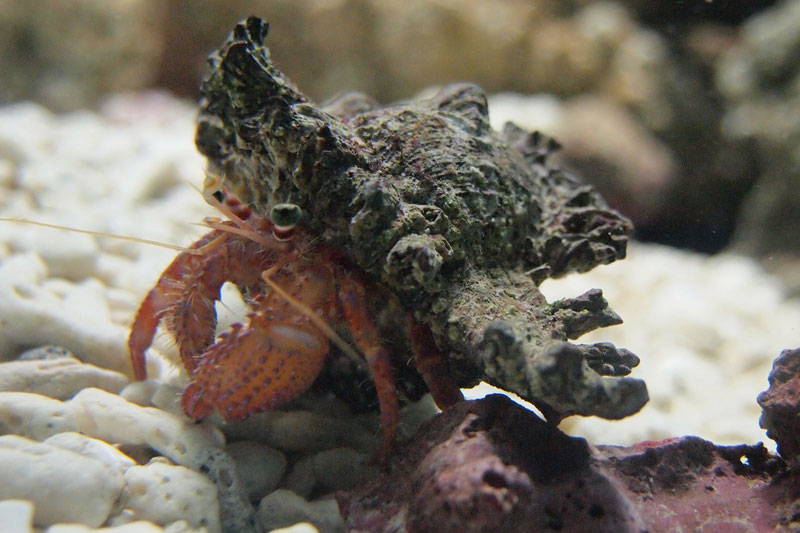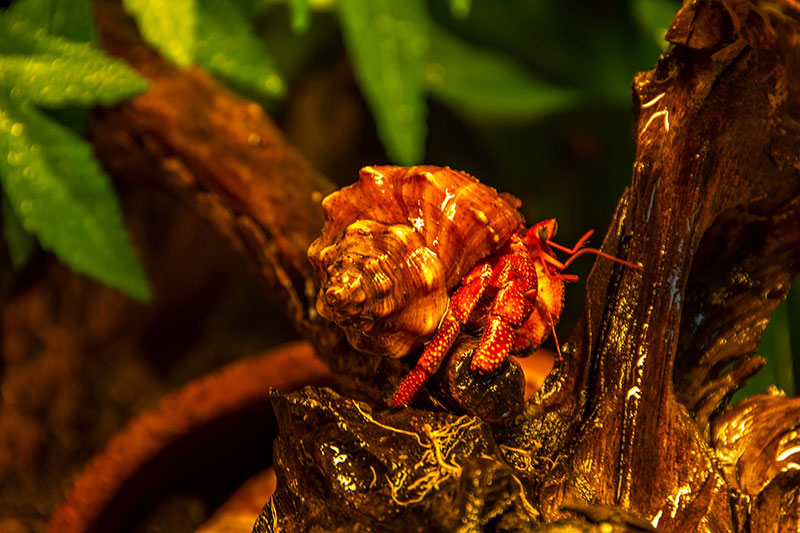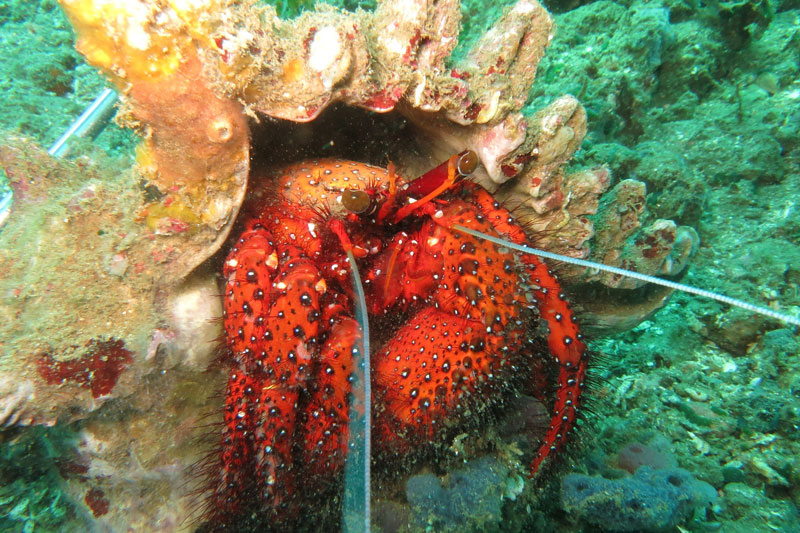Did you know that your hermit crab accounts for one-fourth of the crustacean species in the sea? And you can usually find them hanging out in rocky, tropical and sandy areas. The small critters feed on plankton, small shrimps, and even small fishes. Their sizes also range from 2 to 6 inches but did you know also that there are reportedly giant ones that reach 8 inches in length!
Body
The hermit crab’s main characteristics are its shell, which helps the hermit crab to protect itself and to retain moisture which is beneficial for it’s breathing. Their abdomen also curls into the spiral shape of the shell, that’s why if you’re caring for a hermit crab it’s important to provide it a shell where it can freely move itself.
Their “tails” are called uropods which help them to provide traction on their shells. Their longitudinal abdominal muscles also provide hermit crabs traction against the inner walls of their shell which helps them to stabilize their movement.
Shells

Hermit Crabs move from one shell to another once they start to grow. Hermit crabs in their natural habitat will never fight other hermit crabs for their shell, this is one of the main differences between pet hermit crabs and wild hermit crabs. Once a hermit crab finds itself a suitable shell to move in, it will inspect the following: size, shape, weight, and more importantly the mobility of the shell it wants to move in. If those criteria are met, the hermit crab will move into its new shell otherwise it will remain in its shell and continue to search for a new one.
If you have a pet hermit crab, it’s important to remember that you shouldn’t try or even force your hermit crab to get it out of its shell. Doing so will affect its health since its survival relies heavily on staying in its shell. And also remember to provide your hermit crabs a variety of shells with different size, shapes and openings especially if you’re caring for multiple hermit crabs. As mentioned above, wild hermit crabs won’t fight other hermit crabs for their shell but in captivity they will do so.
Activity
Most hermit crabs’ activities occur during night time since they are nocturnal creatures. So if you have a pet hermit crab, and notice that they aren’t active during the day then don’t worry. While they are active during night time they eat, drink, and socialize with other hermit crabs. Yes you read that right, despite being named hermit crabs, they love to socialize with other hermit crabs.
They also love climbing around, so make sure you provide them with live rocks in their terrarium or aquarium they can climb around. Be sure though that their enclosure is properly sealed because they are known to crawl out of their enclosure. So always double check to prevent them from crawling out and possibly falling off and hurting themselves.
Pets

Hermit crabs are not your usual “pet” wherein you can play with them and pet them whenever you feel like it. And to make things clear, you shouldn’t try petting your hermit crab. And they are not advisable pets for kids since they are fragile creatures. Accidentally dropping them will harm and injure them.
Don’t mistake them as easy to maintain or cheap pets as well because just like cats and dogs, they do require attention and care as well.
It’s worth noting as well that they make good pets if you have any allergies since they don’t have any fur in them. And it’s a fact that crustaceans do not carry any allergens in them hence they make good pets for people with allergies.
